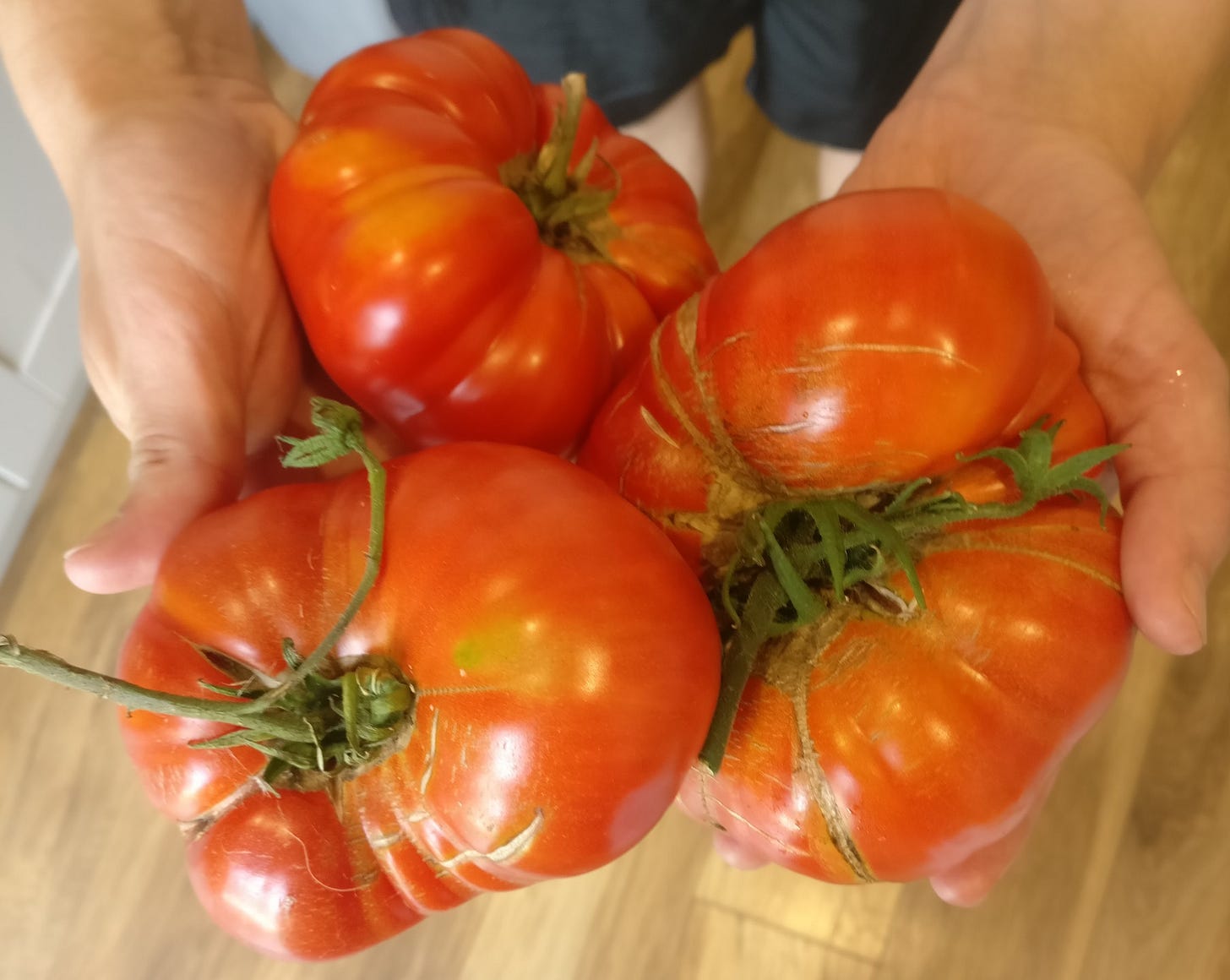Welcome to The Capsule Pantry. Highly flexible, waste-reducing recipes delivered to your inbox every Wednesday, designed to be adapted to what’s in your fridge and pantry. The Capsule Pantry is paid-subscriber only. If you’d like full access, sign up for $5 a month or $50 a year and revolutionize the way you cook today.
Praise the Lord for tomato season! If you’re in the Northern Hemisphere, you’ll be in the thick of tomato heaven right now and we’re all the better for it, IMO.
One of my favorite recipes for the hot late summer days is gazpacho. That chilled southern Spanish soup that is both refreshing and generous in style and flavor.
Gazpacho has become synonymous with “fancy” these days. I’m talking shot glasses of the stuff served at nearly every wedding I’ve attended in the last decade.
But its roots are not fancy in the slightest. Like so many excellent dishes, gazpacho was born from necessity - a way to use up stale bread and overripe tomatoes. It turns the humble into the heavenly.
I’ve gone for an original “purist” recipe here, gleaned from my trips to Andalucia (and many, many gazpachos made and consumed over the years) but with plenty of adaptations to make it your own / fit whatever you have in your fridge and store cupboard.
Keep reading with a 7-day free trial
Subscribe to This much I know to keep reading this post and get 7 days of free access to the full post archives.





